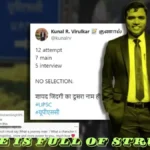Truck Drivers Strike End: After meeting with Ajay Bhhalla of the Union Home Secretary, the All India Motor Transport Association decided to end truckers’ protests against the new hit-and-run law.
The Government assured members of AIMTC that it had not yet implemented these laws but that consultation with them would precede the implementation of any changes.
All issues were successfully addressed following our meeting to discuss the provisions of Bharatiya Nyaya Sahita. According to Malkit Singh Bal, new laws are yet to come into force and will only take effect upon consultation with AIMTC.
The Transport Ministry announced that the truck drivers’ strike will shortly come to an end, and all drivers must resume operations immediately.
Truck drivers have taken to strike to protest increased penalties for hit-and-run cases under the new criminal code – Bharatiya Nyaya Sanhita.
New provisions provide prison terms of up to ten years or a fine of Rs 7 lakh should drivers fail to report accidents or flee from them, compared with just two years under the Indian Penal Code (IPC).
Ajay Bhhalla, Union Home Secretary, stated: “Before implementing Bharatiya Nyaya Sanhita 106-2, we will consult the All India Motor Transport Congress members.
In several states, the nationwide truck driver protest caused panic shopping as people panicked to purchase fuel before it ran out at many petrol stations across the nation due to this national demonstration. People had to line up in order to obtain it.
The Government would like to inform you that new laws and provisions are yet to be implemented, with AIMTC consultation being key in reaching any definitive decision regarding BNS 106(2) implementation. We appeal to AIMTC and all drivers to return to work,” stated Mr. Zaninovich.
At a press briefing held ahead of its meeting with Bhalla, AIMTC demanded that any new penal provisions be removed.
“We do not expect drivers who engage in reckless drinking and driving to be treated leniently. There have been cases in which drivers involved in accidents that weren’t their responsibility were attacked by mobs, sometimes even burning down their vehicles completely for revenge, leaving drivers no option but to flee for their safety.”
No driver would leave behind goods worth crores if their truck cost Rs 50 lakh and could easily be tracked. “Drivers know they can be easily traced and usually return to surrender themselves,” according to him.
Sunil Atri is another AIMTC Member who spoke out. “On December 27, we wrote to the Home Ministry asking them to repeal the law, but to our disappointment, no action was taken by government officials in response. Today’s situation has become so grave that truck drivers have taken to protesting in such large numbers.”
The MHA stated that they took note of all concerns voiced by truckers at their meeting with MHA representatives.
“The Centre would like to remind all stakeholders that these laws and provisions have not yet taken effect, as well as clarifying that any decision to invoke Section 106(2) of Bharatiya Nyay Sanhita would only be made after consulting AIMTC,” according to a statement issued by them, calling upon truck drivers to return to work.
Sources have indicated that drivers who accidentally strike someone and make a timely PCR notification to notify police will face a five-year prison sentence. However, recently, the Supreme Court increased it from five years to ten years for hit-and-run cases.
Accident victims sometimes flee the scene of the crime after an accident for fear that they will be attacked by the mob or lynched by angry residents.
When this occurs, one has the option to call the police rather than flee from it and avoid harsh penalties; an official stated this could save one from further punishment by the Supreme Court has repeatedly stated drivers who drive recklessly cause accidents that kill, then flee should face significant repercussions.
According to Section 106(1) of the Bharatiya Nyay Sanhita, any act or negligence that results in death but does not amount to culpable homicide could result in up to five-year sentences.
Section 106(2) stipulates a maximum 10-year penalty when victims are killed, but drivers leave without reporting to either police or judges promptly afterwards.
Since Monday, truck drivers have been protesting, leading to panic-buying and disrupted supplies across many states. Delhi, Mumbai and Kolkata reported long lines at fuel stations with stores drying up as a result of protesting drivers – as well as having depleted mandis.
Chandigarh authorities have implemented a fuel sales limit at stations within their jurisdiction: two litres per transaction for two-wheelers and five litres for four-wheelers, respectively.
The Opposition Is A Threat To The Government
Protests by truck drivers ignited a political disagreement between government parties and opposition forces. Congress claimed the new strict provisions would lead to “organised corruption” and an “extortionists network,” and Mallikarjun Kharge, Congress President, accused them of punishing poor people by delaying projects and infrastructure development projects.
“Failing to consult affected classes before passing laws without engaging with opposition is an affront to democracy. Shahenshah, a member of Parliament, introduced legislation against drivers – the backbone of the Indian economy. This could have devastating consequences,” wrote Rahul Gandhi on social media platform X.
Hardworking individuals with low earnings can be seriously adversely impacted when put in the heat of a harsh legal process, with abuse leading to “recovery mechanisms” and organised corruption.
Gandhi once pointed out that governments that control democracy through whipping have forgotten the distinction between “emperor’s instructions” and “justice”.
ALSO READ: WHAT ARE NEW LAW FOR ROAD ACCIDENT KNOW HERE IN DETAIL










